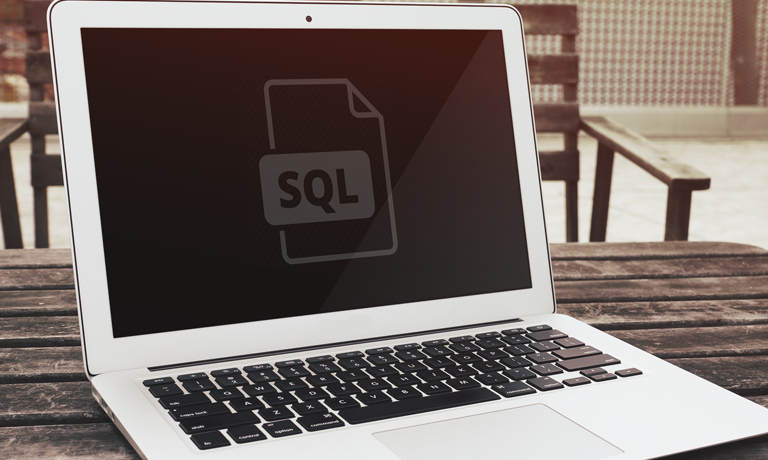Quick Microsoft SQL Server 2012 Reporting Services
Instructors
Quick Microsoft SQL Server 2012 Reporting Services
About This Course
This fast-paced two-day instructor-led course is intended for IT professionals who are interested in quickly learning how to use the Reporting Services development tools to create reports. This course also covers how to use the Reporting Services management and administrative tools to manage a Reporting Services solution.
Audience Profile
This course is intended for SQL professionals, Microsoft Reporting Services administrators and report developers, and business intelligence professionals.
At Course Completion
- Understand version changes of SSRS from 2008-2012.
- Understand Reporting Services installation and architecture.
- Understand and utilize Reporting Services tools.
- Understand and utilize Wizards.
- Create and configure data sources.
- Create and configure datasets.
- Understand security in connections.
- Create and configure Tables.
- Create and configure Matrices.
- Create and configure Lists.
- Understand and utilize Report Items.
- Understand and utilize Report Parts.
- Understand and utilize Charts.
- Understand and utilize Gauges.
- Understand Dashboards.
- Understand and utilize Maps.
- Understand and utilize Data Bars.
- Understand and utilize Sparklines.
- Understand Key Performance Indicators.
- Understand and utilize Expressions.
- Understand and utilize Functions.
- Understand and utilize Interactivity.
- Understand and utilize Parameters.
- Understand and utilize Conditional Formatting.
- Understand Templates.
- Understand and utilize Subreports.
- Deploy reports.
- Secure and manage content.
- Understand and utilize Caching.
- Understand and utilize Snapshots.
- Understand and utilize Report History.
- Understand how to complete other administrative tasks.
Module 1: Course Overview
This module explains how the class will be structured and introduces course materials and additional administrative information.
Lessons
- Introduction
- Course Materials
- Facilities
- Prerequisites
- What We’ll Be Discussing
Lab 1: Course Overview
- None
After completing this module, students will be able to:
- Successfully log into their virtual machine.
- Have a full understanding of what the course intends to cover.
Module 2: Introduction to Microsoft SQL Server Reporting Services
Reporting Services is a report design and enterprise-class information delivery tool. In this module, we will explore the version changes, installation, architecture and tools for Reporting Services.
Lessons
- Version Changes of SSRS from 2008-2012
- Reporting Services Installation and Architecture
- Reporting Services Tools
Lab 1: Introduction to Microsoft SQL Server Reporting Services
- Reporting Services Tools
After completing this module, students will be able to:
- Understand version changes of SSRS from 2008-2012.
- Understand Reporting Services installation and architecture.
- Understand and utilize Reporting Services tools.
Module 3: Building Basic Reports
In this module, we begin building reports using the basics. We will explore the wizards available and then cover tables, matrices, and lists while demonstrating how to use each of them. Finally, we will take a look at the report items available to help design the report.
Lessons
- Wizards
- Data Sources
- Datasets
- Understanding Security in Connections
- Tables
- Matrix
- List
- Report Items
- Report Parts
Lab 1: Building Basic Reports
- Wizards
- Data Source Connections
- Data Sources
- Datasets
- Tables
- Matrix
- List
- Report Parts
- Concept Reinforcement Scenario 1
After completing this module, students will be able to:
- Understand and utilize Wizards.
- Create and configure data sources.
- Create and configure datasets.
- Understand security in connections.
- Create and configure Tables.
- Create and configure Matrices.
- Create and configure Lists.
- Understand and utilize Report Items.
- Understand and utilize Report Parts.
Module 4: Highlighting Basic Reports with Visualizations
Visualize and present your data using visualizations. In this module, we cover the visualizations available, while demonstrating each, so you can see for yourself just how captivating data can be.
Lessons
- Charts
- Gauges and Dashboards
- Maps
- Sparklines, Data Bars, and Indicators
Lab 1: Highlighting Basic Reports with Visualizations
- Charts
- Gauges
- Maps
- Data Bars and Sparklines
- Concept Reinforcement Scenario 2
After completing this module, students will be able to:
- Understand and utilize Charts.
- Understand and utilize Gauges.
- Understand Dashboards.
- Understand and utilize Maps.
- Understand and utilize Data Bars.
- Understand and utilize Sparklines.
- Understand Key Performance Indicators.
Module 5: Developing Advanced Reports
Looking to take reporting to the next level? Then look no further. In this module, we cover what you’ll need to create advanced reports with features such as conditional formatting and interactivity just to name a few.
Lessons
- Expressions
- Functions
- Interactivity
- Parameters
- Conditional Formatting
- Templates
- Subreports
Lab 1: Developing Advanced Reports
- Expressions and Functions
- Parameters Using Two Datasets
- Query Parameters
- Fixed Parameters
- Conditional Formatting
- Subreports
- Concept Reinforcement Scenario 3
After completing this module, students will be able to:
- Understand and utilize Expressions.
- Understand and utilize Functions.
- Understand and utilize Interactivity.
- Understand and utilize Parameters.
- Understand and utilize Conditional Formatting.
- Understand Templates.
- Understand and utilize Subreports.
Module 6: Managing and Maintaining Reporting Services
To share your report, you need to publish or deploy it to a report server or SharePoint site. In this module, we explain deployment options and follow with an explanation on security and administrative tasks.
Lessons
- Deploying Reports
- Securing Content
- Caching
- Snapshots
- History
- Viewing Reports Online
- Utilizing Subscriptions
- Data Alerts
Lab 1: Managing and Maintaining Reporting Services
- Deployment Properties with SQL Server Data Tools
- Report Builder 3.0 Deployment
- Reporting Services Roles
- Caching
- Snapshots and History
- Shared Schedule
- Subscriptions
- Concept Reinforcement Scenario 4
After completing this module, students will be able to:
- Deploy reports.
- Secure and manage content.
- Understand and utilize Caching.
- Understand and utilize Snapshots.
- Understand and utilize Report History.
- Understand how to complete other administrative tasks.
Course Reviews
No Reviews found for this course.

